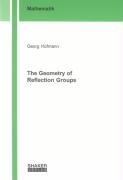The Geometry of Reflection Groups
BücherAngebote / Angebote:
The aim of this work is to study reflection groups in three different contexts. In Chapter 1 we provide the framework by introducing the definitions of a reflection for several different underlying spaces: vector spaces, affine spaces, certain topological spaces, and graphs. The setting of a connected, locally connected Hausdorff space is very general one. Here it is natural to consider homeomorphisms that only act like reflections locally. The covering behavior of these local reflections is studied with the basic notions of sheaf theory. In Chapter 2 we investigate the abstract context of Coxeter groups. The corresponding theory was initiated by Harold Scott MacDonald Coxeter. One of his many important contributions to this field of mathematics is the classification of finite reflection groups. We approach the well-known class of Coxeter groups using the concept of reflections on graphs. One main achievement is to present a new characterization of Coxeter groups as groups generated by reflections on their Cayley graph.
In Chapter 3 we consider reflection groups that act properly discontinuously on so-called RC-spaces. This class of topological spaces in particular contains the class of n-manifolds. We obtain generalizations of geometric notions such as chambers and adjacency commonly used in the theory of reflection groups on affine spaces. Among other things we prove that the groups under consideration are Coxeter groups.
In the last chapter we treat the geometry of extended affine reflection groups (EAReG), a class of reflection groups acting on finite-dimensional vector spaces which does not fit into the setting of Chapter 3. These groups occur as Weyl groups of extended affine Lie algebras. We give an explicit description of the orbits of an EAReG. In this context of extended affine Weyl groups (EAWeG) we infer that any generic point is a relative extreme point of the convex hull of its orbit.
Our studies of the class of EAReGs also reveals a phenomenon which does not occur in reflection groups in the setting of Chapter 3 or Chapter 4 and which, as far as we know, has not been studied before: If an EAReG is generated by a set of reflections, called basic, then not every reflection occurring in the group is conjugate to a basic reflection. Those reflections which are not conjugate to a basic reflection are called ghost reflections. Ghost reflections also occur in certain EAWeGs. In this setting they are reflections that do not come from an element in the root system. In other words, the root system can be enriched by certain so-called ghost roots without changing the resulting Weyl group.
Folgt in ca. 2-3 Arbeitstagen
